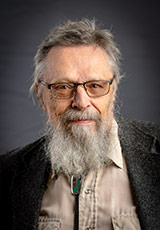A game theory approach to ballot box decisions
Author: Faculty of Management
Posted on Sep 12, 2024
Category: Research

As federal elections approach in both Canada and the US, undecided voters are carefully assessing the strengths and weaknesses of the party leaders on offer. A recent study by UNB business professor Dr. H. A. Eiselt introduces a new approach to evaluate party candidates by applying game theory.
Traditionally, researchers have analyzed where candidates stand on the political spectrum, while others look at political spending. However, in their paper, “Maximizing political vote in multiple districts,” published in Socio-Economic Planning Sciences, Dr. Eiselt and his co-author, Dr. Vladimir Marianov, take a fresh approach by incorporating optimization theory into political campaign spending.
Their model centers on a set number of electoral districts (or "ridings," as they're known in Canada), where each party's candidate is positioned on the left-right political scale. Voters are also mapped onto that same spectrum, and standard models typically assume that voters will choose the candidate closest to their own position.
“What makes our approach different,” Dr. Eiselt notes, “is that we factor in party expenditures. A party that spends heavily on a candidate can make them more appealing to the voters. By using an attraction function, we show that a candidate's vote count isn't just a reflection of their position on the political spectrum, but also the impact of advertising spending.” With this in mind, the researchers ask: Given a fixed campaign budget, how should a party distribute its funds across electoral districts to win the maximum number of seats?
Dr. Eiselt points out that one party’s spending cannot be looked at in isolation, as it is unrealistic to assume that the opposing party wouldn’t respond. Using a game-theoretic model, both parties in the study allocate their budgets across candidates in a strategic manner.
“In this setup, we demonstrate the existence of a Nash equilibrium - a situation where neither party can improve its chances by changing their current strategy alone, indicating a form of stability,” says Dr. Eiselt. “Yet, as with most game theory models, while both parties aim to optimize their position, one of them inevitably faces a loss. The fact that something has been optimized does not mean that the resulting solution is good. It’s just the best on a set of (potentially bad) choices.”
This research offers practical insights for political strategists on how to allocate campaign resources more effectively, potentially influencing electoral outcomes.
Dr. Eiselt is continuing his research of political processes by investigating the design of electoral districts, in a manner that will represent registered minority groups according to their numbers. The resulting techniques will then be applied to the Province of New Brunswick.
A member of the Quantitative Methods area in UNB’s faculty of management, Dr. Eiselt’s research interests include location models, multi-criteria decision analysis, and alternate solution methods for linear programming and he has applied these to such issues as multipurpose shopping, political districting, the evaluation of the efficiency of hospitals, and mathematical measures of counterterrorism. He teaches courses in management sciences and location theory.
Learn more about Dr. H. A. Eiselt and UNB’s Faculty of Management
For more information about this story, contact Liz Lemon-Mitchell
